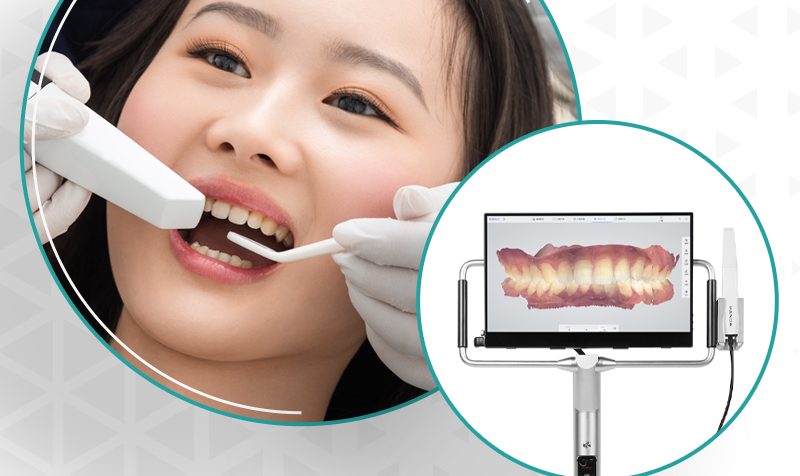When it is about examining your teeth and gums, traditional dental procedures can fall woefully short. And to identify ailments hiding behind layers of soft or hard tissues or in inaccessible areas of the buccal cavity, X-rays are the go-to procedure for dentists. X-rays are extremely important in diagnosing a variety of ailments in our body including the teeth and gums. But they come with the risk of exposure, which if go beyond a certain threshold, can be threatening to your health as well.
Further, a dental X-ray needs to be developed and examined by the dentist to understand the nature of the ailment before any treatment protocol is decided. The X-rays are in use for a long time in dentistry and need to be replaced with a modern, accurate, consistent, safe, and quick treatment procedure. This is where a digital impression system comes into the picture with the capability to transform dentistry for the better.

Why is a digital impression system better?
Compared to the traditional procedure of taking impressions, a digital device generates the replica of the soft and hard tissues of the patient’s mouth using lasers or optical scanners. The device can capture clear and accurate images of teeth and gums in minutes without the patient having to hold on to messy materials like alginates in his or her mouth. The digital impression thus obtained is passed on to a computer to create restorations. In fact, there are two types of digital impression technology:
- First, the one that captures images as virtual photographs giving dentists and laboratories a series of images to work with
- Second, the one that captures moving images in the form of video allowing dentists to look into the buccal cavity in real-time
Both technologies, as part of digital dentistry,either use lasers or optical scanners, which are safe and highly accurate. Lasers use a concentrated source of light to capture details of the gums and teeth thereby eliminating the need for the patient to hold unpleasant material in his or her mouth. In digital optical scanners, the patient’s teeth need to be powder-coated using a special spray to ensure proper recording of the impression.
How does a digital impression system transform dentistry?
A digital impression system is capable of increasing the accuracy, efficiency, and productivity in dentistry significantly. Besides, it allows dentists to send the virtual impression of a patient’s buccal cavity to the laboratory instead of the stone model or traditional impression using snail mail. The uptick of using such a system in transforming digital dentistry includes the following:
- Speeds up patient’s treatment by ensuring same-day dental restorations
- No multiple visits to the dental clinic
- No use of distasteful and unpleasant materials for the patients
- Prevents the gagging of patients when they hold alginate materials in the mouth
- Reduces impression taking errors and ensures fewer restoration mistakes
- The digital impressions can be stored indefinitely thereby saving space and creating a paperless environment
- Patients become more engaged with the scanning process as they can see their impressions on the screen
Conclusion
Digital impression systems have the transformational ability to enhance the quality of dentistry and patients’ experience. Employing such systems in the dental workflow can increase patient footfall, reduce human errors, and lead to accurate restorations. In a competitive market where every other dentist looks to cut costs and augment revenue while enhancing patients’ experience, switching to digital dentistry can work wonders.






